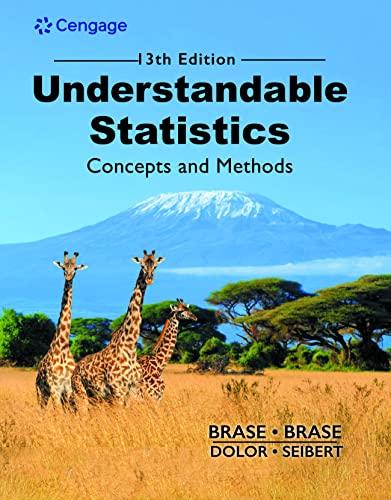Basic Computation: Test p1 2 p2 For one binomial experiment, 200 binomial trials produced 60 successes. For
Question:
Basic Computation: Test p1 2 p2 For one binomial experiment, 200 binomial trials produced 60 successes.
For a second independent binomial experiment, 400 binomial trials produced 156 successes. At the 5% level of significance, test the claim that the probability of success for the second binomial experiment is greater than that for the first.
(a) Compute the pooled probability of success for the two experiments.
(b) Check Requirements What distribution does the sample test statistic follow? Explain.
(c) State the hypotheses.
(d) Compute ˆ ˆ p1 2p2 and the corresponding sample distribution value.
(e) Find the P-value of the sample test statistic.
(f) Conclude the test.
(g) Interpret the results.
Please provide the following information for Problems 17–28 and 31–37.
(a) What is the level of significance? State the null and alternate hypotheses.
(b) Check Requirements What sampling distribution will you use? What assumptions are you making? Compute the sample test statistic and corresponding z or t value as appropriate.
(c) Find (or estimate) the P-value. Sketch the sampling distribution and show the area corresponding to the P-value.
(d) Based on your answers in parts
(a) through (c), will you reject or fail to reject the null hypothesis? Are the data statistically significant at level a?
(e) Interpret your conclusion in the context of the application.
Note: For degrees of freedom d.f. not in the Student’s t table, use the closest d.f. that is smaller.
In some situations, this choice of d.f. may increase the P-value a small amount and therefore produce a slightly more “conservative” answer.
Answers may vary due to rounding.
AppendixLO1
Step by Step Answer:

Understandable Statistics Concepts And Methods
ISBN: 9780357719176
13th Edition
Authors: Charles Henry Brase, Corrinne Pellillo Brase





